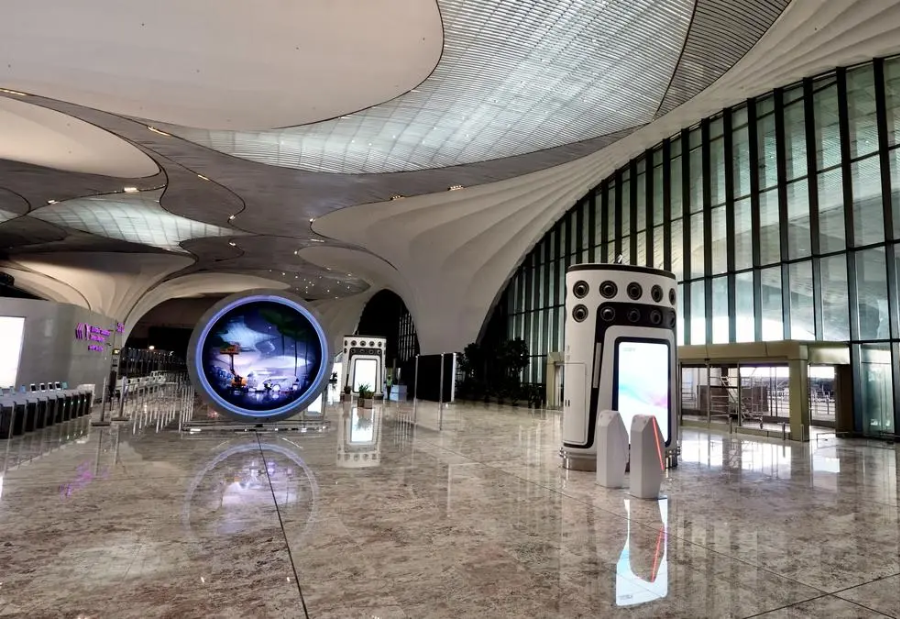Navi Mumbai is rapidly transforming into a major business hub, driven by key infrastructure developments that enhance its integration with the Mumbai Metropolitan Region. The opening of the Navi Mumbai International Airport (NMIA) has marked a defining moment for the city, creating a new corridor from Panvel in the south to Kharghar, offering a strong alternative to Mumbai’s congested commercial districts.
A significant driver of this growth has been the Mumbai Trans Harbour Link (MTHL), also known as Atal Setu, which now connects South Mumbai to Navi Mumbai in under 30 minutes. The link has turned Panvel and surrounding areas into natural extensions of Mumbai’s commercial landscape. With future expansions planned toward the Mumbai-Pune Expressway and Bandra-Worli Sea Link, the Panvel-Kharghar corridor is set to become a direct bridge between Mumbai and Pune’s metropolitan regions. Panvel, strategically located at the intersection of the Mumbai-Pune Expressway, NH-4, and NH-66, is emerging as a key gateway for the state’s ‘Third Mumbai’ initiative, anchored by NMIA.
Enhanced connectivity through suburban railway expansion, metro linkages, and the proposed Virar-Alibaug Multi-Modal Corridor is positioning Panvel as a major economic and residential hub. Its affordability, accessibility, and proximity to industrial zones around JNPT Port make it highly attractive to investors, developers, and logistics operators.
Meanwhile, Kharghar and Upper Kharghar are developing into Navi Mumbai’s prime business addresses. The upcoming 375-acre International Corporate Park, often referred to as BKC-2, is expected to attract global corporations and create over one lakh jobs. Supported by quality social infrastructure, greenery, and structured urban planning by CIDCO, Kharghar is emerging as a model for liveable urban spaces. Developers are aligning projects to meet rising investor and end-user demand, particularly in Upper Kharghar, which offers some of the highest potential returns in the Mumbai Metropolitan Region.
The city’s transformation has been guided by coordinated efforts from agencies such as MMRDA, CIDCO, and NITI Aayog, resulting in a comprehensive master plan that balances residential, commercial, and social growth. Initiatives like the Navi Mumbai Airport Influence Notified Area (NAINA) ensure structured and sustainable development, giving rise to integrated townships that combine living, working, and recreational spaces.
As Mumbai’s traditional business hubs reach saturation, the Panvel-Kharghar corridor represents a decentralised model of urban growth. Strategic infrastructure, government-backed planning, and increasing investor interest are driving Navi Mumbai from a satellite city to a full-fledged central business hub, redefining modern metropolitan living in India.
Also read: Viksit Workforce for a Viksit Bharat
Do Follow: The Mainstream formerly known as CIO News LinkedIn Account | The Mainstream formerly known as CIO News Facebook | The Mainstream formerly known as CIO News Youtube | The Mainstream formerly known as CIO News Twitter |The Mainstream formerly known as CIO News Whatsapp Channel | The Mainstream formerly known as CIO News Instagram
About us:
The Mainstream formerly known as CIO News is a premier platform dedicated to delivering latest news, updates, and insights from the tech industry. With its strong foundation of intellectual property and thought leadership, the platform is well-positioned to stay ahead of the curve and lead conversations about how technology shapes our world. From its early days as CIO News to its rebranding as The Mainstream on November 28, 2024, it has been expanding its global reach, targeting key markets in the Middle East & Africa, ASEAN, the USA, and the UK. The Mainstream is a vision to put technology at the center of every conversation, inspiring professionals and organizations to embrace the future of tech.




